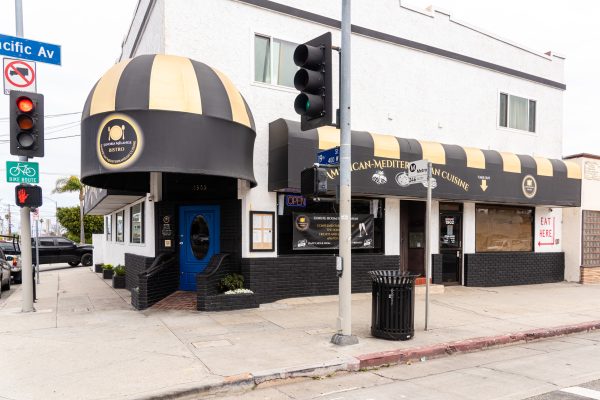
Kay Nam sat behind the counter in her shop, in front of a wall of lotto tickets, pictures of toddlers and neighborhood dogs, and among stands of magazines.
A lady walked in with a small, white-haired dog.
“Finished your morning walk?” Nam asked the lady, kneeling down to pop a doggie snack in the dog’s mouth.
Nestled between a crepe restaurant and a real estate brokerage firm is Nam’s store, Current Events, a news shop open daily from 7:30 a.m. to 9 p.m., stocked with national and international newspapers and magazines, from the Irish Independent and La Opinion to Barron’s and Financial Times.
In the digital age and hard economic times, when people can subscribe to newspapers and magazines on their iPads or read content online for free, business has been a struggle for the Nams. “It’s tough,” Kay said, adding, “I hope we can keep the business as much longer as possible.”
Kay has run the shop with her husband, Tom Nam, for 13 years. She emigrated in 1999 from South Korea to New York, where Tom went to school and she worked in the advertising department of the Korean Times. The Nams share the store space with a business that sells tickets, and also provide mailboxes for residents and sell lotto tickets, cigarettes and candy.
Only in Manhattan Beach is it possible to keep a newsstand business, Kay said, with a bright laugh. “People read a lot.”
Since new products are delivered daily, staying on top of inventory is labor-intensive. Luckily for her business, most publishers buy back newspapers or magazines that weren’t sold if within a certain time period.
In these tough times, what keeps the Nams running? “Mostly the people,” Kay said, adding, “I see the kids grow up.” The majority of her customers are regulars who come in multiple times a week, if not every day.
Selling the news for so long, Kay’s able to gauge what the community is interested in. Michael Jackson’s death wasn’t so popular in Manhattan Beach. In fact, Kay recalled, she had such a surplus of magazines that week, that out-of-towners came in to buy the papers because the publications were sold out in their towns.
The September 11 attacks, on the other hand, were of huge interest to the local community, as were Barack Obama’s presidential election and Steve Jobs’ death. Women came in when Princess Diana died, Kay said. When the economy was bustling and building was going on, home magazines were popular.
Greg Masuda, a patron of the Nams for more than a decade, said Current Events is walking distance from his home, making frequent trips to the store convenient. “I wouldn’t want to drive to Barnes and Noble just to get a magazine,” Masuda said. He often picks up photography or auto magazines – “because I get a lot of my newspapers on here,” he said, pulling a Kindle out of the side pocket of his shorts.
Coming to Current Events is like walking into a library, Masuda said, because the selection is so broad. He walks in and thinks, “What do I want to read today?”
Many of Kay’s customers like having their options and reading different publications day to day, she said, even though it’s more expensive. If papers pile up in front of someone’s door, they become less appealing, she said. “I think there’s more motivation to read if you go out there and buy it,” she said.
Often times, Kay’s customers call her in the afternoon to let her know they picked up a paper in the morning before she arrived and will pay her later. Or they’ll pick up the paper in the mornings before she gets there and leave the money in front of the door. “Nobody takes it,” she said, “I’ve known them a long time and they know me.”









